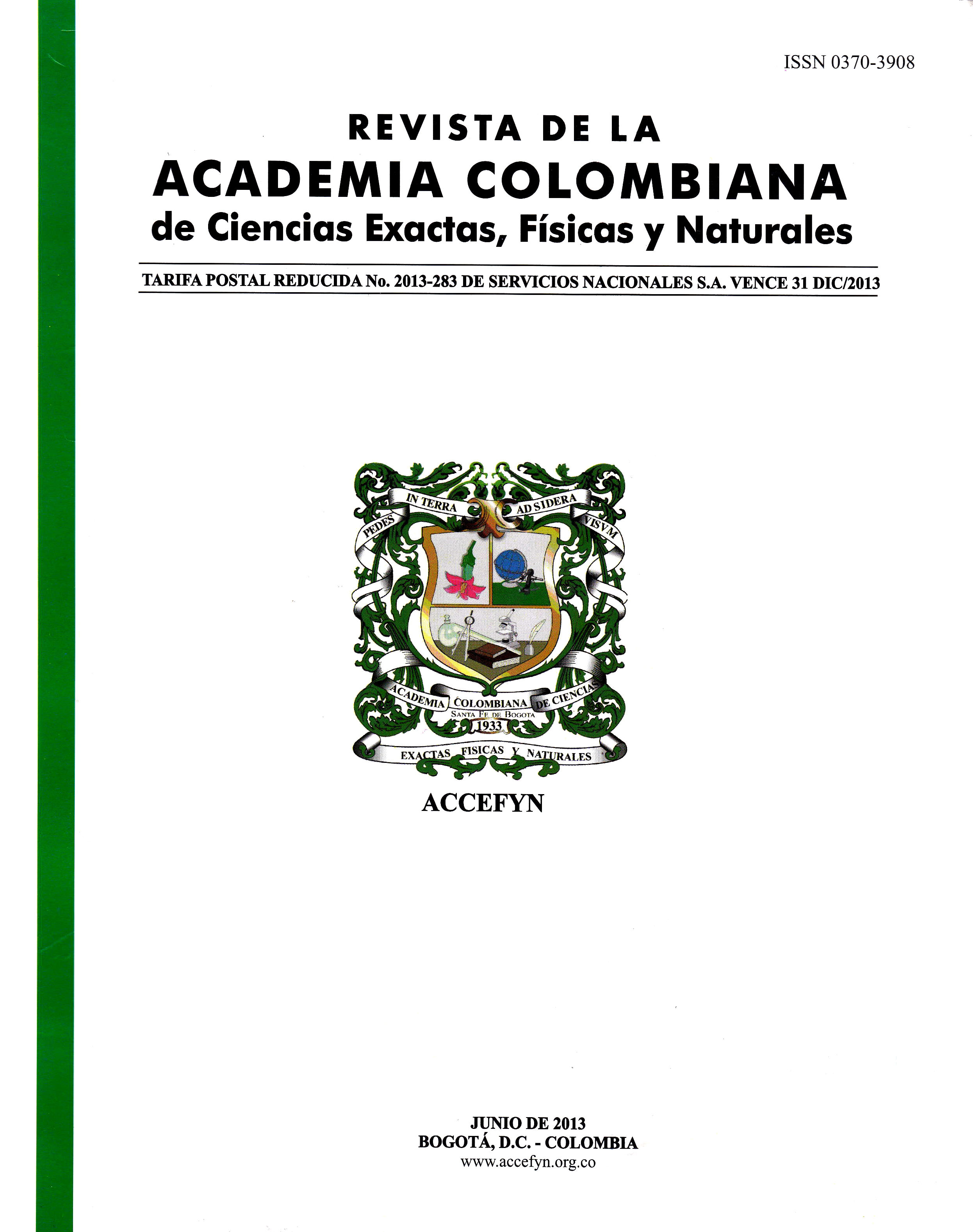Resumen
La estructura 3D de la glutatión Z-transferasa se obtuvo del Protein Data Bank bajo el código 1FW1; posee una secuencia de 208 residuos (5 al 212). El modelo obtenido consta de 208 aminoácidos, un ión sulfato, una molécula de glutatión, una molécula de 2,3-dihidroxi-1,4-ditiobuano (DTT) y 109 moléculas de agua. Siendo el residuo Ser10 el responsable de la actividad catalítica. A pesar de las diferencias numéricas en los valores de las funciones de evaluación y teniendo en cuenta el error asociado a la utilización de métodos derivados de la mecánica clásica los resultados del docking molecular fueron lo suficientemente adecuados para estimar la posible localización y conformación de los aductos formados entre glutatión y ácidos α-haloalcanoicos; estos resultados mostraron una apropiada complementariedad geométrica entre el sitio activo y los α-haloalcanoicos; no evidenciaron diferencias significativas con respecto a la estéreo selectividad y estéreo especificidad de la GSTZ hacia los ácidos α-haloalcanoicos. Adicionalmente los resultados sugieren que los ligandos estudiados tienen la suficiente movilidad dentro del sitio activo para generar poses con alta afinidad de unión pero con poca probabilidad de ocurrencia, lo cual puede deberse a la orientación que asumen algunos átomos de hidrógeno.
Referencias
Sheehan D, Meade G, Foley VM y Dowd CA. 2001. Structure, function and evolution of glutathione transferases: implications for classification of non-mammalian members of an ancient enzyme superfamily. Biochemical Journal 360, 1-16.
Hayes J D y Pulford, D. J. 1995. The glutathione S-transferase supergene family: regulation of GST and the contribution of the isoenzymes to cancer chemoprotection and drug resistance. Critical Reviews in Biochemistry and Molecular Biology 30, 445-600.
Mannervik, B. y Danielson, H. 1988. Glutathione transferases -structure and catalytic activity. Critical Reviews in Biochemistry and Molecular Biology 23, 283-337.
Board PG, Coggan M, Johnston P, Ross V, Suzuki T y Webb G. 1990. Genetic heterogeneity of the human glutathione transfereses: A complex of gene families Pharmacology & Therapeutics. 48, 357-369.
Shea TC, Claflin G, Comstock KE, Sanderson BJS, Burstein NA, Keenan EJ, Mannervik B y Henner WD. 1990.
Glutathione transferase activity and isoenzyme composition in primary human breast cancers. Cancer Research 50, 6848-6853.
Board PG, Anders MW y Blackburn AC. 2005. Catalytic Function and Expression of Glutathione Transferase Zeta en Drug Metabolism and Transport: Molecular Methods and Mechanisms, Edited by: L. Lash Humana Press Inc., Totowa, NJ 85-107.
Stewart JJP. 2002. MOPAC 2002 Manual. Fujitsu Limited. 8. Polekhina G, Board PG, Blackburn AC and Parker MW. 2001. Crystal Structure of Maleylacetoacetate Isomerase/Glutathione Transferase Zeta Reveals the Molecular Basis for Its Remarkable Catalytic Promiscuity. Biochemistry 40, 1567-1576.
Hutchinson, EG y Thornton, JM. 1996. PROMOTIF - A program to identify structural motifs in proteins. Protein Science. 5, 212-220.
Clark M, Cramer RD y Van Opdenbosch. 1989. Validation of the general purpose tripos 5.2 force field. Journal of Computational Chemistry. 10(8), 982 - 1012.
Baker NA, Sept D, Joseph S, Holst MJ, McCammon JA. 2001. Electrostatics of nanosystems: application to microtubules and the ribosome. Proceedings of the National Academy of Sciences. 98, 10037-10041.
Ruppert J, Welch W y Jain AN. 1997. Automatic identification and representation of protein binding sites for molecular docking. Protein Science 6(3), 524-533.
Rarey M, Kramer B, Lengauer T and Klebe G. 1996. A Fast Flexible Docking Method using an Incremental Construction Algorithm. Journal of Molecular Biology 261, 470-489.
Kramer B, Rarey M y Lengauer T. 1999. Evaluation of the FLEXX incremental construction algorithm for protein-ligand docking. Proteins:Structure, Function, and Genetics. 37(2)228-241.
Eldridge MD, Murray CW, Auton TR, Paolini GV y Mee RP. 1997. Empirical scoring functions: I. The development of a fast empirical scoring function to estimate the binding affinity al of Computer-Aided Molecular Design 11, 425-445.
Kuntz ID, Blaney JM, Oatley SJ, Langridge R y Ferrin TE. 1982. A geometric approach to macromolecule-ligand interactions. Journal of Molecular Biology 161, 269-288.
Muegge I y Martin YC. 1999. A General and Fast Scoring Function for Protein-Ligand Interactions: A Simplified Potential Approach. Journal of Medicinal Chemistry 42, 791-804.
Muegge I. 2006. PMF Scoring Revisited. Journal of Medicinal Chemistry 49, 5895-5902.
Jones G, Willett P, Glen R, Leach AR y Taylor R. 1997. Development and Validation of a Genetic Algorithm for Flexible Docking. Journal of Molecular Biology 267(3), 727-748.
Wang R., Lu Y y Wang S. 2003. Comparative evaluation of 11 scoring functions for molecular docking. Journal of Medicinal Chemistry 46(12), 2287-2303.
Gasteiger J, y Marsilli M. 1980. Iterative partial equalization of orbital elektronegativity - a rapid access to atomic charges. Tetrahedron 36, 3219-3288.
Hestenes M y Stiefel E. 1952. Methods of Congugate Gradients for Solving Linear Systems. Journal of Research of the National Bureau of Standards 49, 409-436.
Press W, Flannery B, Teukolsky S y Vetterling W. 1992. Numerical Recipes in C - The Art of Scientific Computing, 2da Edition. Cambridge University Press, CONJUGATE GRADIENTS (p. 420), SIMPLEX (p. 430)
Lovell S, Davis I, Arendall W III, de Bakker P, Word J, Prisant M, Richardson J y Richardson D. 2002. Structure validation by Calpha geometry: phi,psi and Cbeta deviation. Proteins: Structure, Function & Genetics. 50(3), 437-450.
Laurie A. y Jackson R. 2005. Q-SiteFinder: an energy-based method for the prediction of protein–ligand binding sites. Bioinformatics 21(9):1908-1916.
Ledvina PS, Yao N, Choudhary A. y Quiocho FA. 1996. Negative electrostatic surface potential of protein sites specific for anionic ligands. Biochemistry. 93, 6786 -679.
Hildebrandt A, Blossey R, Rjasanow S, Kohlbacher O. y Lenhof H. 2006. Electrostatic potentials of proteins in water: a structured continuum approach. Bioinformatics. 23, e99-e.
Weiner PK, Langridge R, Blaney JM, Schaefer R y Kollman PA. 1982. Electrostatic Potential Molecular Surfaces. Proceedings of the National Academy of Sciences 79, 3754-3758.
Böhm HJ. 1994. The development of a simple empirical scoring function to estimate the binding constant for a protein-ligand complex of known three-dimensional structure. Journal of Computer-Aided Molecular Design 8(3), 243-256.

Esta obra está bajo una licencia internacional Creative Commons Atribución-NoComercial-SinDerivadas 4.0.
Derechos de autor 2023 Revista de la Academia Colombiana de Ciencias Exactas, Físicas y Naturales

